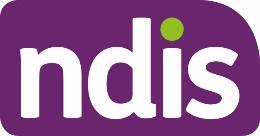 Resear
Resear
FOI
ch Paper
24/25-0189
DOCUMENT 5
OFFICIAL
For Internal Use Only
Melillo Method
The content of this document is OFFICIAL.
Please note:
The research and literature reviews collated by our TAB Research Team are not to be shared
external to the Branch. These are for internal TAB use only and are intended to assist our
advisors with their reasonable and necessary decision-making.
Delegates have access to a wide variety of comprehensive guidance material. If Delegates
require further information on access or planning matters, they are to call the TAPS line for
advice.
The Research Team are unable to ensure that the information listed below provides an
accurate & up-to-date snapshot of these matters
Research question: What is the Melillo Method and how are practitioners
qualified/registered to deliver Melillo Method interventions?
Is there any evidence for the Melillo Method improving functional capacity and/or quality of
life for 7 year old children with Autism Spectrum Disorder?
Are there potential risks of harm?
Date: 10/07/2023
Requestor: Jillian s47F - personal privacy
Endorsed by: Katrin s47F - personal
priva
Researcher: Aaron s47F - personal privacy
Cleared by: Stephanie s47F - personal privacy
Melillo Method
Page 1 of 7
OFFICIAL
Page 1 of 7
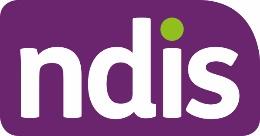 Resear
Resear
FOI
ch Paper
24/25-0189
OFFICIAL
For Internal Use Only
1. Contents
Melillo Method ............................................................................................................................ 1
1.
Contents ....................................................................................................................... 2
2.
Summary ...................................................................................................................... 2
3.
Melillo Method ............................................................................................................... 3
3.1
Background ............................................................................................................... 3
3.2
Accreditation .............................................................................................................. 4
3.3
Risks .......................................................................................................................... 4
4.
Evidence ....................................................................................................................... 5
5.
References ................................................................................................................... 5
2. Summary
The Melillo Method is a multimodal approach to improving neurodevelopmental difficulties. It
may include different therapeutic modalities including sensory integration, movement
exercises, cognitive exercises, dietary changes and behavioural therapy. Clients are offered
an individualised approach that combines some or all of the available therapeutic techniques.
Practitioners in Australia may be certified by the Interdisciplinary Association of Functional
Neurosciences and Rehabilitation but do not require any other health or medical qualifications.
Experimental research on the Melillo Method has been conducted using the Brain Balance
program, an approached delivered through Brain Balance Centers in USA. While there is no
source which explicitly equates the Brain Balance program with the Melillo Method, they were
both invented by Robert Melillo and there do not appear to be differences in theory or practice.
No experimental evidence was found to show that the Brain Balance program is effective for
the treatment of people with autism. There is some published evidence supporting its use for
children with attention deficit hyperactivity disorder. However, this evidence is preliminary and
shows a high risk of bias.
It should also be noted that due to the complexity of the approach, other bodies of evidence
exist for therapeutic modalities delivered in isolation. Due to the individualised and multimodal
nature of the program, sessions may include a mix of evidence-based and non-evidence
based techniques.
No significant risks of harm associated with the practice were identified.
Melillo Method
Page 2 of 7
OFFICIAL
Page 2 of 7
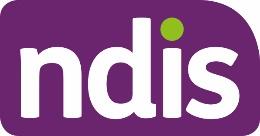 Resear
Resear
FOI
ch Paper
24/25-0189
OFFICIAL
For Internal Use Only
3. Melillo Method
3.1 Background
The Melillo Method was developed by chiropractor Robert Melillo. It is a multimodal practice
that aims to “identify brain imbalances and treat many symptoms of mental, attention,
behavioral, and learning disorders in patients of all ages” (Melillo, 2023a). The method
consists of sensory stimulation, cognitive exercises and movement exercises coupled with
changes to diet, environmental changes and behavioural therapy. A European provider, the
Melillo Method Learning Center states:
The goal is simple: restore balance to the brain by targeting specific networks on one
side of the brain with very specific stimulation. By combining different types of
stimulation (light, sound, smell, movement, inner ear, balance, touch) along with
cognitive and academic activities etc., we can activate specific networks on one side of
the brain, causing them to grow and become more connected (Melillo Method Learning
Center, 2020).
Different practitioners include different offerings in their service description. The company
Brain Balance Centers was co-founded by Robert Melillo (Brain Balance Centers, n.d. a;
Lawrence, 2018). While no sources explicitly equate the Melillo Method with the Brain Balance
program, they have the same aims and use the same techniques. Jackson and Wild (2021)
describe the Brain Balance program as including:
• passive sensory stimulation in the form of tactile, olfactory, visual, and auditory
stimulation, exercises targeting primitive and postural reflexes
• core muscle exercises
• proprioceptive and balance training
• vestibular exercises, including rotational, translational, and anterior-to-posterior
movements
• fine motor activities, including the palmar grasp reflex and the Purdue Peg Board
• rhythm and timing exercises, including whole-body coordination activities and use of
the Interactive Metronome®
• activities that aim to enhance auditory and visual processing, as well as coordination
and endurance of eye movements (Jackson & Wild, 2021, p.29).
Other providers may implement the method in private practice in USA and around the world.
The Melillo Method Learning Center operates out of Bulgaria. Australian providers include
Connect Movement Therapy, Spiral Healing Rooms and Neurofit Brain Centre, though there
may be others. Only Neurofit Brain Centre identifies that they are a registered NDIS provider
(Neurofit Brain Centre, 2023).
Melillo Method
Page 3 of 7
OFFICIAL
Page 3 of 7
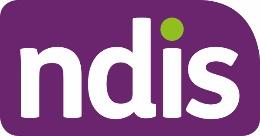 Resear
Resear
FOI
ch Paper
24/25-0189
OFFICIAL
For Internal Use Only
Spiral Healing Rooms offers Primitive Reflex integration and digital therapies (Spiral Healing
Rooms, n.d). Connect Movement Therapy includes personalised sessions of Primitive Reflex
Integration, Core Strengthening & Postural Stability, Sensory & Motor Integration, Visual &
Auditory Integration, Whole Body Vibration, Neurosage, and Laser Therapy (Connect
Movement Therapy, 2022). Neurofit Brain Centre includes the above but also adds Interactive
metronome, optomotor therapy, balance tracking training, acoustic therapy, transcranial
stimulation therapy, colour & light therapy and exercise therapy (Neurofit Brain Centre, 2023).
The Melillo Method Learning Center (2020) offers this extensive list of possible activities:
• Sensory stimulation including light, optokinetic and other types of visual stimulation;
sound and music therapy; smell and aromatherapy; tactile stimulation; balance and
proprioception exercises; vestibular spinning activities.
• Provision of information on diet/nutrition
• Neurosage videogames, Neurosage virtual reality programs, Neurosage music,
sound and vibration frequencies.
• Motor activities including primitive reflex exercises; developmental exercises; core
stability exercises; muscle tone balancing exercises; dominance exercises;
interactive metronome; eye balancing and tracking exercises; fine motor exercises.
• Behavioural/social therapy including mirroring therapy; behaviour modification;
green therapy.
• Cognitive and academic activities for reading, math, spelling, listening,
comprehension, attention, executive function, memory, decoding, phonemic
awareness, concentration, organisation and goal setting.
3.2 Accreditation
The Interdisciplinary Association of Functional Neurosciences and Rehabilitation (IAFNR)
provides certification in the Melillo Method. To sit the certification exam, participants must have
completed all modules on the Melillo Method that are offered on Robert Melillo’s website.
Participants seeking certification do not require any other training or qualifications. (IAFNR,
n.d.; Melillo, 2023b).
Brain Balance Centers in the USA may include their own training scheme separate from
IAFNR accreditation (Brain Balance Centers, n.d. b).
3.3 Risks
No risks were identified in the practice of the Melillo Method.
Practitioners may differ in what they are permitted to offer. Brain Balance states that the
program does not diagnose or treat medical conditions (Brain Balance Centers, n.d. c).
Melillo Method
Page 4 of 7
OFFICIAL
Page 4 of 7
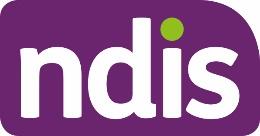 Resear
Resear
FOI
ch Paper
24/25-0189
OFFICIAL
For Internal Use Only
However, Robert Melillo’s website does state that the method can be used to treat
neurodevelopment and learning disorders (Melillo, 2023).
4. Evidence
Robert Melillo makes the case for his theory that hemispheric brain imbalances cause
neurodevelopment disorders in several theoretical papers. These articles provide a theoretical
basis for his therapeutic approach but do not include experimental evidence regarding the
efficacy of the Melillo Method (Melillo et al, 2022; Leisman & Melillo, 2022; Melillo & Leisman,
2009).
A research pack developed by Brain Balance lists over 50 research papers that may lend
theoretical support to their method. However, none of the papers cited considers or includes
Brain Balance as an intervention. They do include an internal study of parental reports after
therapy showing considerable effects (Brain Balance Centers, n.d. d).
Published peer-reviewed evidence does not refer to the Melillo Method. Instead, studies may
investigate the Brain Balance program or Interactive Metronome training.
Several studies have found positive effect of the Brain Balance program (Teicher et al, 2023;
Jackson & wild, 2021). However, the studies are preliminary and have significant risk of bias.
Teicher et al (2023) reported an improvement in attention and hyperactivity, though results
were inconsistent across outcome measures. They also note significant limitations including a
60% participant drop out rate. Jackson and Wild (2021) note improvements of children across
several measures. However, this study has high risk of bias. The authors explicitly declare no
conflict of interest despite the lead author (Jackson) being employed as Vice President of
Programs and Outcomes at Brain Balance (Brain Balance Centers, n.d. d). Other studies
authored by Jackson also support the use of the Brain Balance program (Jackson & Jordan,
2023; Jackson & Jordan, 2022; Jackson & Robertson, 2020).
None of the reviewed experimental studies state that any study participants were diagnosed
with Autism Spectrum Disorder.
5. References
Brain Balance Centers. (n.d. a).
Brain Balance. https://www.brainbalancecenters.com/
Brain Balance Centers. (n.d. b).
Brain Balance Support and Training.
https://franchise.brainbalancecenters.com/training-and-support
Brain Balance Centers. (n.d. c).
Brain Balance Program for Kids.
https://www.brainbalancecenters.com/our-program
Brain Balance Centers. (n.d. d).
About Dr Rebecca Jackson.
https://www.brainbalancecenters.com/dr-rebecca-jackson
Melillo Method
Page 5 of 7
OFFICIAL
Page 5 of 7
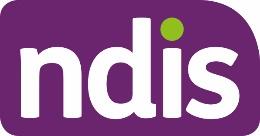 Resear
Resear
FOI
ch Paper
24/25-0189
OFFICIAL
For Internal Use Only
Brain Balance Centers. (n.d. e).
Brain Balance Programs Results and Research.
https://f.hubspotusercontent10.net/hubfs/3798961/BB ResearchPamphlet REVFinal
WEB.pdf
Connect Movement Therapies. (2022). Functional Neuro-Development.
https://connectmovementtherapy.com.au/melillo/
Interdisciplinary Association of Functional Neurosciences and Rehabilitation. (n.d.).
Requirements to sit for Melillo Method Certification Exam.
https://static1.squarespace.com/static/5ec5887141709153dbf50730/t/649afa968445b53
a3cfe28f0/1687878295028/BOTH+Exam+Requirements+Slides.pdf
Jackson, R., Jordan, J.T. (2023). Measurement properties of the Brain Balance® multidomain
developmental survey: validated factor structure, internal reliability, and measurement
invariance. Current Psychology. https://doi.org/10.1007/s12144-023-04248-2
Jackson, R., Jordan, J.T. (2022). Reliable change in parent-rated scores on the Brown
Attention-Deficit Disorder Scales® from pre- to post-participation in the Brain Balance®
program. Humanit Soc Sci Commun. 9, 315. https://doi.org/10.1057/s41599-022-01333-
y
Jackson, R. and Wild, C. J. (2021) Effect of the Brain Balance Program® on Cognitive
Performance in Children and Adolescents with Developmental and Attentional Issues.
Journal of Advances in Medicine and Medical Research, 33 (6). pp. 27-41.
https://doi.org/10.9734/jammr/2021/v33i630857
Jackson, R., & Robertson, M. (2020). A retrospective review of parent-reported anxiety and
emotional functioning in children with developmental challenges after participation in the
brain balance® program.
Journal of Mental Health and Clinical Psychology,
4(1), 10–20.
https://doi.org/10.29245/2578-2959/2019/1.1192
Lawrence, D. (2018, February 2). Bloomberg.
https://www.bloomberg.com/news/features/2018-02-05/how-much-would-you-pay-to-
cure-your-kid-s-learning-disability
Leisman, G., & Melillo, R. (2022). Front and center: Maturational dysregulation of frontal lobe
functional neuroanatomic connections in attention deficit hyperactivity disorder.
Frontiers in neuroanatomy, 16, 936025. https://doi.org/10.3389/fnana.2022.936025
Melillo, R. (2023a).
About Dr. Melillo. https://www.drrobertmelillo.com/about-dr-melillo/
Melillo, R. (2023b).
Course. https://www.drrobertmelillo.com/courses/
Melillo, R., Leisman, G., Machado, C., Machado-Ferrer, Y., Chinchilla-Acosta, M., Kamgang,
S., Melillo, T., & Carmeli, E. (2022). Retained Primitive Reflexes and Potential for
Intervention in Autistic Spectrum Disorders.
Frontiers in neurology, 13, 922322.
https://doi.org/10.3389/fneur.2022.922322
Melillo Method
Page 6 of 7
OFFICIAL
Page 6 of 7
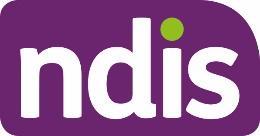 Resear
Resear
FOI
ch Paper
24/25-0189
OFFICIAL
For Internal Use Only
Melillo, R., & Leisman, G. (2009). Autistic spectrum disorders as functional disconnection
syndrome. Reviews in the neurosciences, 20(2), 111–131.
https://doi.org/10.1515/revneuro.2009.20.2.111
Meyer, A. L., & Leboeuf-Yde, C. (2018). Unravelling functional neurology: a critical review of
clinical research articles on the effect or benefit of the functional neurology approach.
Chiropractic & manual therapies,
26, 30. https://doi.org/10.1186/s12998-018-0198-7
Melillo Method Learning Center. (2020).
About Dr Robert J Melillo.
https://www.melillomethod.eu/dr-robert-j-melillo/
Neurofit Brain Centre. (2023).
Our Therapies. https://neurofitbraincentre.com.au/our-services/
Spiral Healing Rooms. (n.d). www.spiralhealingrooms.com.au
Melillo Method
Page 7 of 7
OFFICIAL
Page 7 of 7






